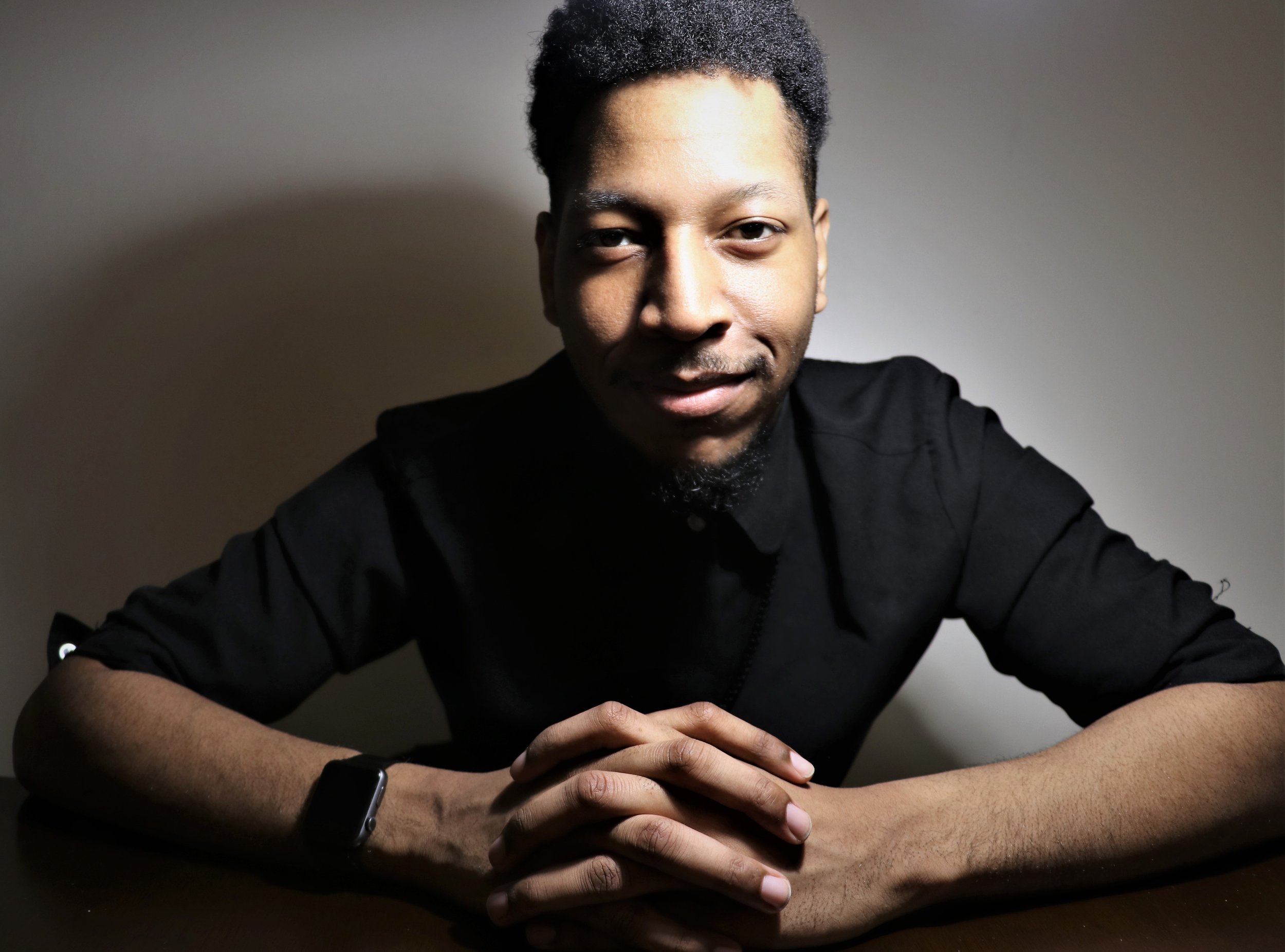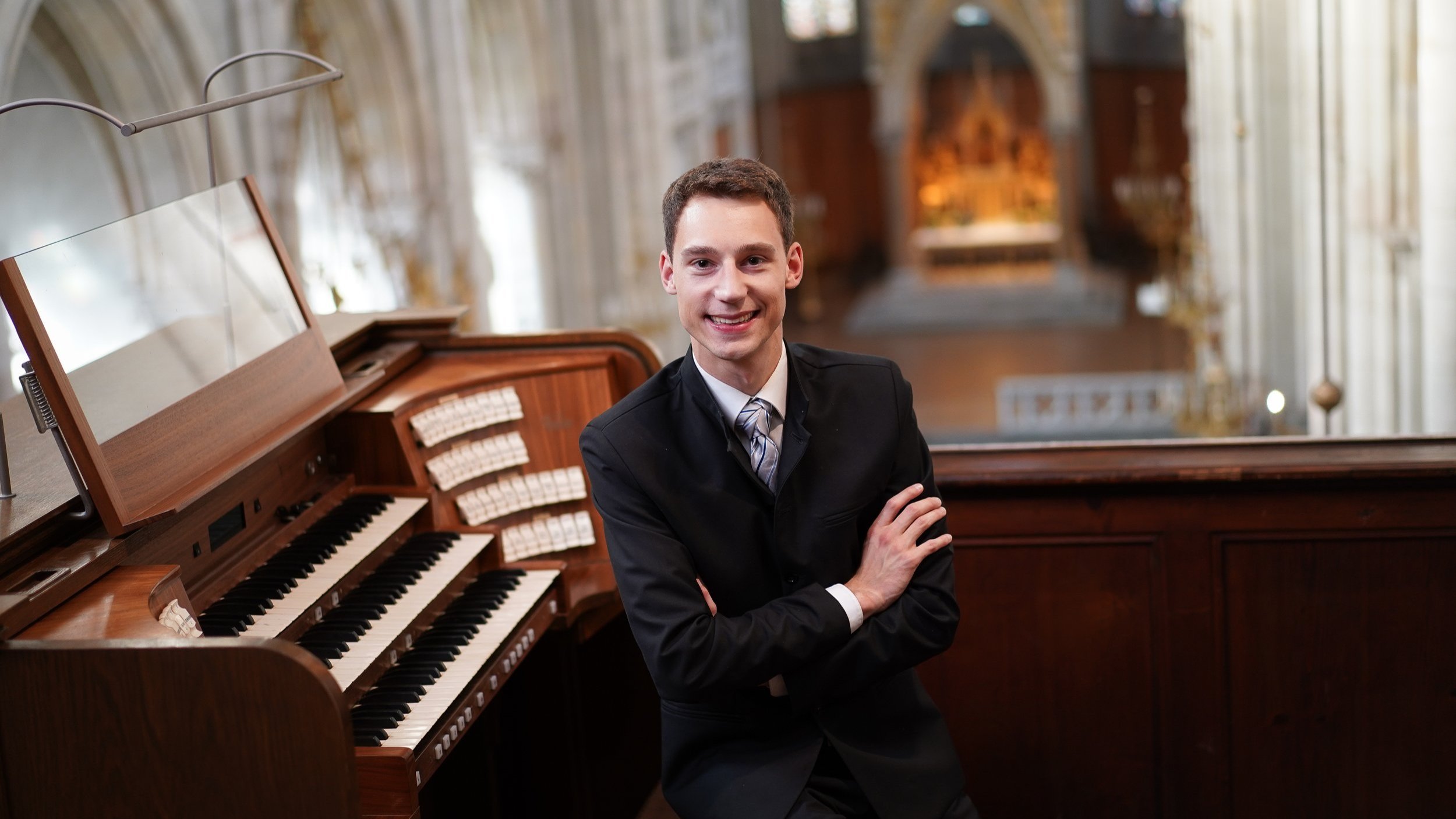Video Premiere: New Morse Code Releases Thomas Kotcheff's "then and then and then this"
New Morse Code, credit: Tatiana Daubek | Classical Post
Contemporary music duo New Morse Code, comprised of Hannah Collins (cello) and Michael Compitello (percussion) joins Classical Post for a special video premiere of composer Thomas Kotcheff’s “then and then and then this”. They discuss the collaborative process, filming, matching timbre and what’s coming up next.
Collaborative Process
Classical Post: What was the collaborative process like between your duo, New Morse Code, and composer Thomas Kotcheff? Can you discuss the workshopping process while at Avaloch Farm Music Institute in 2017?
Michael Compitello: Thomas describes then and then and then this as the most collaborative piece he’s written thus far, and it’s definitely one of the most collaborative works we’ve been a part of as a duo. We love that it represents both of our personalities and strengths while embodying the central elements of Thomas’s music: energy, drive, humor, and a detailed ear for color and rhythm.
We began by sharing music we love with one another, bonding over favorite pieces and common passions. Thomas had taken some snare drum lessons, and since I love snare drum, we shared some of my techniques and jargon. For percussionists, the instrumentation of a piece can have more impact than almost any other factor, so we spent a lot of time auditioning unique percussion instruments, ranging from metal shards to wooden planks to salad bowls to wine bottles, and almost everything in between. Although Thomas has written frequently for percussion, he was interested in discovering some new sounds and arranging them in a way that was both idiomatic and allowed for a wide variety of playing techniques. At the same time, Thomas brought with him some small instruments whose sounds fascinated and inspired him.
Because Hannah and I are interested in music that avoids melody/accompaniment textures, Thomas’ initial idea was to explore ways that Hannah and I could play together, ranging from total unison to rhythmic lockstep. Thomas was also interested in exploring new sound colors and extended techniques as a way to find common ground between us.
We experimented with a number of short sketches Thomas wrote. Each day Thomas would visit our studio with a new sketch focused on a technique, special sound, or rhythmic motive. We’d try out the music, and Thomas would revise, asking us to change material on the spot, and then either keeping or moving on from his sketch. Eventually we settled into a percussion setup that provided a lot of different sound colors while also allowing for easy access to everything. By the time we reached Sketch 8d, Thomas was satisfied, and we adjourned while he tied together the sketches into a larger work.
Thomas Kotcheff: “then and then and then this”
Filming The Video
CP: When did you film the video for then and then and then this?
Hannah Collins: We filmed this video back in July 2019, which at this point feels like several lifetimes ago. At the time, we were back at Avaloch Farm Music Institute refining the piece with Thomas and we all took a trip down to New York to document it with engineer Ryan Streber at Oktaven Audio. Christopher and Mary Smith from Point of Order Productions joined us to film the session. For the rest of 2019, we were so busy traveling, teaching, and performing that we didn’t have a chance to put together the final video. Now, looking back, we are so grateful to have been able to spend that time with Thomas, Ryan, Chris and Mary together in the same room and we are really happy to be able to share this video now while there aren’t many performances going on.
Unusual Instrumentation
CP: For lack of a better word, the cello part is wonderfully shreddy. What are the benefits of composing for the unusual instrumentation of cello and percussion?
Hannah Collins: As a duo, we are particularly interested in exploring ways that we can speak in the same musical language despite the inherent differences of our instruments. As Mike mentioned earlier, this usually steers us away from music which has prescribed roles for melody and accompaniment, and towards textures that we can both participate in on equal footing. To me, this piece is all about riding the energy level. Thomas is a master at guiding performers and listeners through dramatic spikes, suspenseful lulls, sudden stops, humorous interjections, and gradual build-ups to explosive levels. It’s a tall order for a cello to be able to match the thrilling drama and volume of something like a snare drum roll. In those kinds of situations, Thomas took out exact notes as a parameter, focusing the cello writing only on rhythm, volume, and pitch direction so that I could be free to go bananas. Shredding is a good workout!
CP: Can you discuss the practice of matching the timbre of the cello with percussion, when that’s the desired effect?
Michael Compitello: The process worked both ways: some days Thomas would try to recreate on the cello a sound I was making on a woodblock or bottle, and other days we brainstormed instruments that could match an overpressured bow stroke on the cello. Some of the matching was based on pitch (setting cello notes to match the glass bottles, for example), while in other instances Thomas was interested in match colors, such as the long passage of cello and percussion “scales” in the middle of the work or the squeakiness of the highest sounds.
Low-tech Distortion Filter
CP: Hannah, I have to ask, what is that on the cello’s C string?
Hannah Collins: Great question! That is a gob of self-sealing silicone tape which functions as a kind of low-tech distortion filter. We had been experimenting with using poster tack for the same purpose, but it would often become dislodged, spinning loose and sliding down the string like a bead. The silicone tape sticks only to itself, holds tightly, and doesn’t leave any stickiness or residue on the string. I have to thank the geniuses from Spektral Quartet for that tip!
Creative Projects
CP: What have your creative projects looked like during this time? Is New Morse Code currently collaborating on anything, either in person or virtually?
Hannah Collins: We have been using this time to continue our work on New Morse Connections, a Kickstarter-backed project focused on creating community through our work and confronting major issues in our society by creating opportunities to listen to the voices and experiences of individual people. In August, we released an EP album of The Emigrants, a collaborative project with composer George Lam featuring the stories of seven immigrant musicians living and working in Queens, NY.
We are currently in the midst of filming *dwb* (driving while black), a one-act opera about the mental anguish of a mother preparing to teach her African-American son how to drive in a country where driving while Black can be a dangerous and even deadly activity. The soprano, Roberta Gumbel, wrote the libretto herself, drawing from her own thoughts and experiences raising her son who is now in college, and composer Susan Kander wrote the music. The performance will be livestreamed by Baruch Center for the Performing Arts and other co-presenters in late October. Over the summer we also had the opportunity to collaborate remotely with Thomas in a couple of trio videos and an online concert for Electric Earth Concerts. He brings the same incredible energy to his piano playing and it is always a total blast working with him, even from across the country. HOCKET, his piano duo with composer/pianist Sarah Gibson, has been doing incredible work during this time. Check out their #What2020SoundsLike project!
New Morse Code, credit: Tatiana Daubek | Classical Post
New Morse Code
New Morse Code (Hannah Collins, cello; Michael Compitello, percussion) is the confluence of two magnetic personalities who have taken up the admirable task of creating a hub for the performance, commissioning, and promotion of new music. NMC is theoretically the alluring and uncommon combination of cello and percussion, but in practice is best described as two musicians of extraordinary depth and skill untethered by their instrumental constraints. This unrestricted approach has allowed them to create a body of work in which Hannah can be found crushing plastic bottles and Michael plucking the strings of the cello––all with the intention of expanding and facilitating the imaginations of their composer-collaborators––while ultimately creating a meaningful and lasting repertoire. The performances that arise from this playful and innovative methodology reveal Hannah and Michael’s passion for sharing the work of their friends and peers, and aside from their effortless ability to perform the most finger-twisting of contemporary repertoire, NMC’s ability to communicate the esoteric details and depth of these complex works is what makes them truly remarkable chamber musicians. As tireless advocates for new music, they constantly seek out diverse venues (wineries, outdoor parks, art museums, elementary school classrooms), and their ability to connect with disparate audiences by way of their disarming charm, accessible intellect, and dynamic musicality is exceptional.
Hannah and Michael formed New Morse Code while they were students at Yale after returning to the United States from extended and informative study in Europe. Inspired by their similar yet different experiences abroad, they began performing together and planting the seeds that would blossom into their dedicated community of collaborators and followers. Hannah teaches at the University of Kansas and Michael teaches at Arizona State University. They serve as assistant directors of Avaloch Farm Music Institute.
New Morse Code's 2017 debut album Simplicity Itself on New Focus Recordings was described by ICareIfYouListen as “an ebullient passage through pieces that each showcase the duo’s clarity of artistic vision and their near-perfect synchronicity,” while Q2 Music called the album “a flag of genuineness raised.” Their projects have received support from Chamber Music America and New Music USA. In 2019 they released the title suite of Matthew Barnson’s portrait album, Vanitas, on innova recordings and collaborated with Eliza Bagg, Lee Dionne, and andPlay on and all the days were purple, Alex Weiser’s Pulitzer Prize-finalist work on Cantaloupe music.












